'This is how I recovered from a running injury'
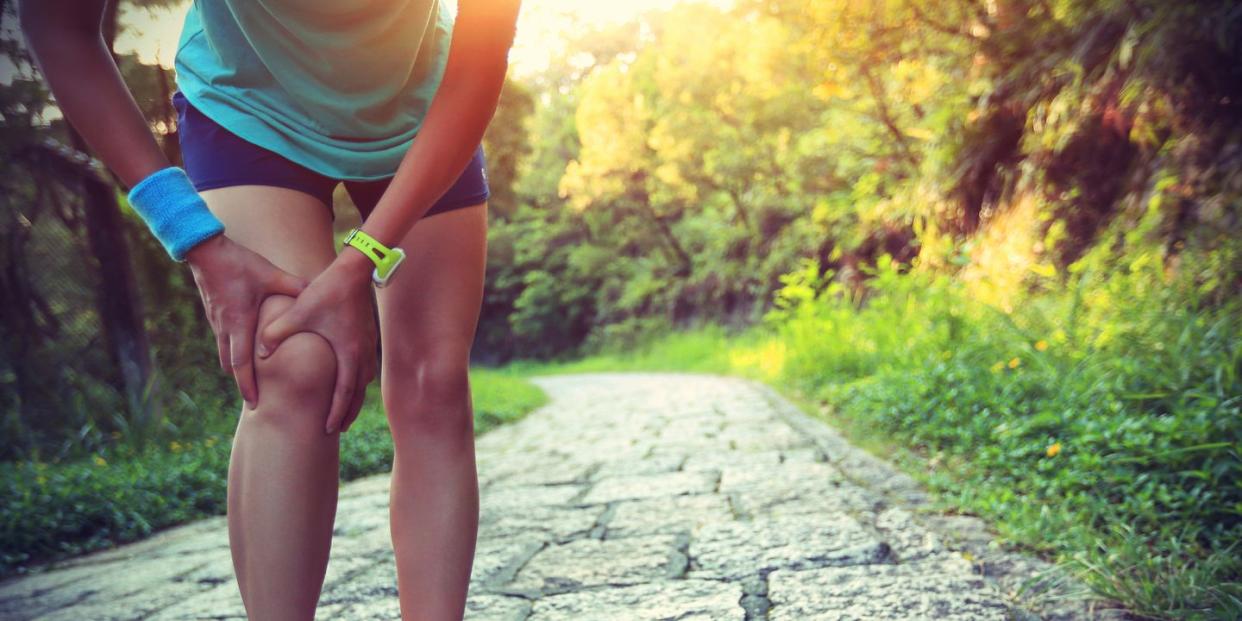
It’s almost a given to get an injury as a runner - especially when you’ve been racking up those miles or if you're in training for a race.
So, if consistently pounding the pavements or the 26 miles of the marathon this weekend has left you with a sore Achilles or runner's knee, what can you do to recover as quickly as possible?
Like many keen runners, I picked up an injury during training for a half marathon, the London Landmarks. My training was going well, and I'd managed to get to 11 miles, but a month before I felt my knee weaken as I finished a long run. I've had similar injuries when I'd upped the number of miles I'd been doing - and a physio suggested rest and strengthening exercises. But, are there any other alternative ways for me to get race-ready?
First, let's get to the nitty-gritty of why we runners pick up so many injuries. As running is such an impact sport our joints will always bear the brunt, picking up some wear and tear along the way, while other factors such as incorrect form or even the wrong running shoes can cause injury.
Physiotherapist, Claire Mills, says the most common injuries she sees are, 'knee pain - either lateral or anterior, calf pain or shin splints. Generally, these injuries are due to overtraining or increasing mileage too quickly, but can also be due to a lack of strength or a capacity to run a certain distance - normally it’s a combination of both.'
Strength work
I do a couple of strength classes at the gym, but they're not specific to my knee injury, so this was my first go-to, and recommended by a physiotherapist.
But why is strength work so key for runners? 'When you run the ground reaction force is approximately 2.5-3 times your body weight, so your leg muscles have to absorb this. When running a distance you therefore require adequate strength and capacity in these muscles to shock absorb particularly your quadriceps and calf muscles predominantly,' explains Mills.
'By strengthening these muscles, alongside others, you improve the control of the limb as you make contact with the ground minimising any torsion through tendons or excessive rotation of the lower limb that can overload joints.'
Although I found it incredibly boring I tried to work through a series of strengthening exercises, including glute bridges, one-legged squats and leg extensions. After a couple of weeks, I started to see improvements - less pain in the right side of my knee and less swelling too, meaning I could, thankfully start running again.
Heat therapy
One of the first pieces of advice I was given was to apply a cold compress to my injury - but is this just an old wives tale when it comes to recovery? 'There is evidence that both heat and ice can give temporary local analgesic effects and both may reduce muscle soreness,' adds Mills, who is also the founder of Core LDN, 'I would say it's your preference and in an acute injury, swelling or post-op I would choose ice over heat. You can also alternate between hot and cold known as contrast therapy.'
I gave this a go, using both a cold compress for a few minutes and alternating it with Hyperice's Venom Leg 2. If you are not familiar with the tool, it's like a hot water bottle and massage gun in one - wrapping it around my knee the heat felt soothing, while the massage sensation also relieved some pain in the knee.
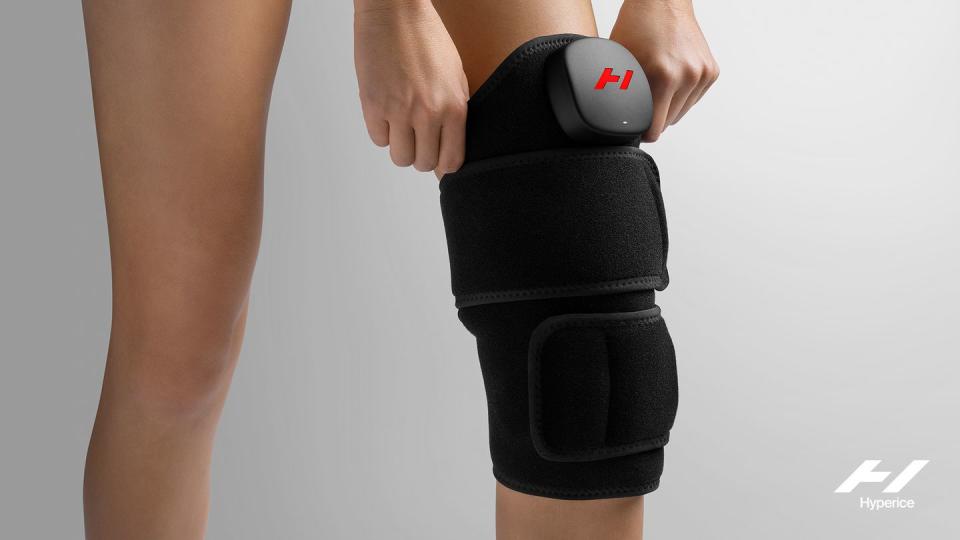
I repeated this daily for a couple of weeks before the half marathon and a week in I could feel the difference. As I did my training runs the knee felt less tender and the swelling had gone down. I've also been using it for recovery after the race and it's become a nightly ritual.
Pilates
I already knew how important strength work was, and although I've used pilates for toning and strengthening in the past, I hadn't thought of it as a tool for runners. Helen O'Leary, physiotherapist and director of Complete Pilates explains that not only can it be used for active recovery, but if you have an injury it can help with the rehabilitation.
'Unlike mat Pilates, the reformers use springs which can both assist and resist your movement. If you have a serious injury and need to be off your feet, the reformer can be used in a way that means you are partially weight-bearing. As a result, you can still work the area but in a safe way under the right amount of load. It can also be used to keep the rest of you strong, fit and mobile.'
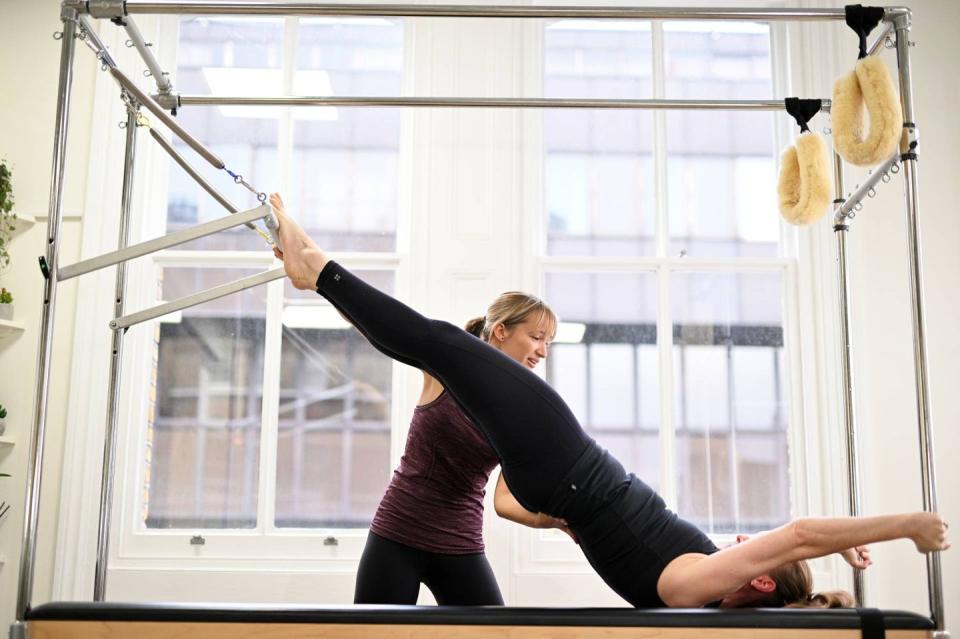
I signed up for a couple of 1-2-1 classes and found them really valuable - we worked through some of the below exercises, with Helen explaining why they work well for injuries.
Scooters - for strengthening the hips. 'Bring your knees forward over your toes and this will also strengthen the knees. It will give you more stability around your pelvis and hips whilst challenging your balance and strength in standing.'
Knee stretches, especially in flexion - 'This sounds like it should be a stretch but instead, it is a big eccentric contraction which means you will get a lot of mobility and strength around the front of the thigh and over the knee.'
Reverse abdominals - 'Although this does target the abs, it also works the deeper hip flexors, exactly what you need as a runner to be able to drive the hip up. You can again do this both single leg or double leg.'
Feet in straps - 'A great exercise for mobility around your hips whilst you have to find the core stability to keep your trunk relatively quiet. You also have the proprioception to avoid ‘locking’ out your knees and getting good activation around the joint.'
Adding this to my strength work every week helped me work on the muscles around the knee and also the hips and glutes, which Helen said all play a part when it comes to a knee injury.
Resting
One of the best things to do when you've got an injury is to rest - but telling a runner to rest, especially when training for a race, isn't quite the solution you want to hear. After my initial injury, I rested for about a week but was keen to return and rack up those miles.
So, when I was invited to the Pan Pacific hotel to try out their new Marathon Recovery package I thought it was an ideal way to force myself to rest. The package consists of 30 minutes in Normatec compression boots, aka Jenifer Aniston's (and WH Fitness director's) go-to when they've got DOMS or need some TLC in the legs.
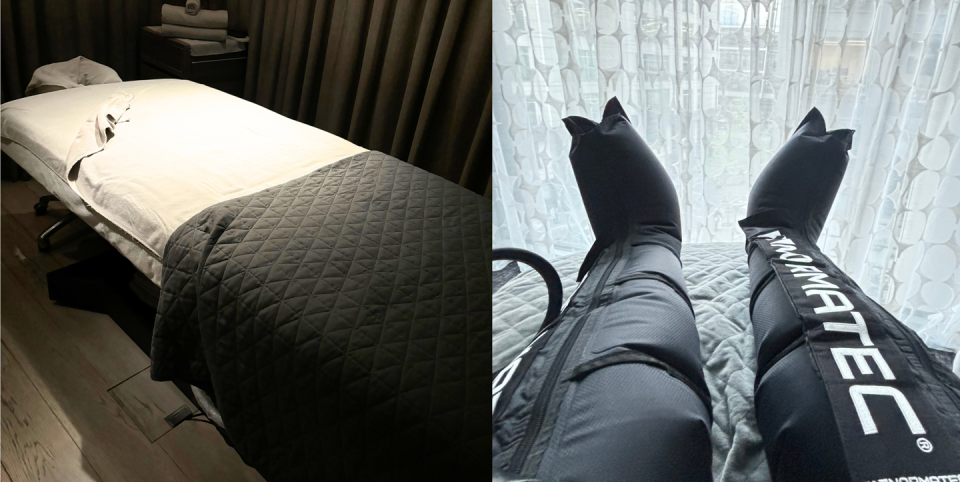
As the boots worked their magic they helped increase the circulation in my legs and revive my tired muscles, while they are also known to help reduce swelling. Plus, as the compression boots blew up around my legs I was forced to relax, so instead of fighting it I put my phone down and tried to enjoy the experience.
After this, I had a 30-minute express massage and finished it off with a quick swim in their pool which overlooks the city. I left feeling rested and the next day my knee felt less inflamed and ready to tackle a short run again.
I made it
You'll be happy to know that I completed the 13.1 miles of the London Landmarks, and although my knee injury did flare up, all my recovery tools helped massively. If I sign up for another marathon or decide to start running longer distances regularly, strength work, including reformer pilates, will need to be pencilled in, heavily, to my training plan - otherwise, I know I'll pick up another injury quickly. While the heat therapy and rest were a great antidote for recovery in the long run.
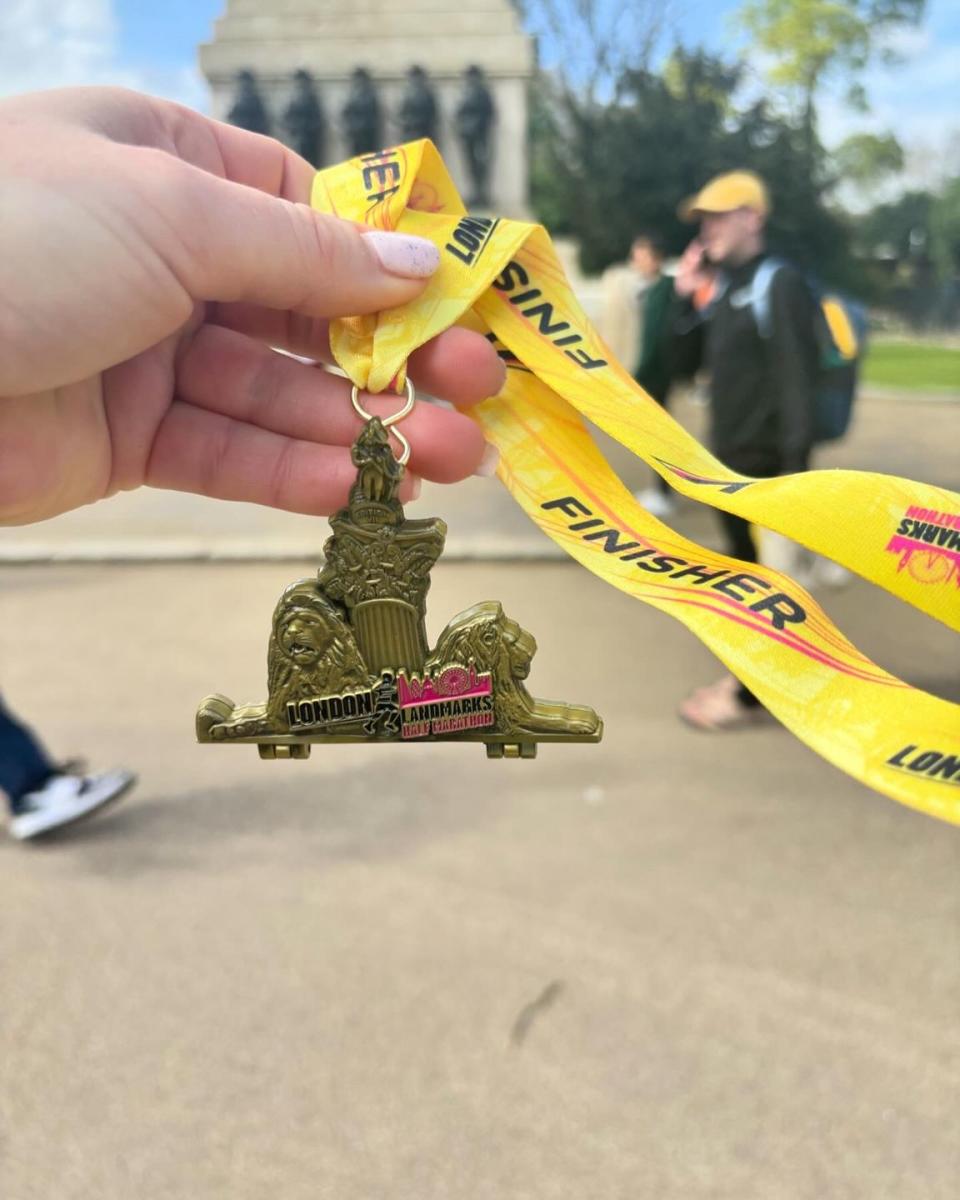
Of course, if your injury is really bad before the race, and gets worse over a week, then it's worth seeing a physiotherapist, and assessing whether you should still compete in the race. Mills adds: 'If you're trying to achieve a time and the injury has impeded your training in a way that you cannot achieve that goal or would be in agony trying to achieve it, or worse, cause further injury, then admit defeat and opt-out.
'If you are doing it as a personal achievement, maybe running it for charity, then you could consider opting to run a mile, then walk for a few minutes, to give your body a recovery.'
More fitness stories...
Weekend only exercise could be as effective as regular workouts
This is why half of women in the UK are dropping out of exercise
You Might Also Like


